CHROMOPHARE D 660, D 540, D 510 User manual
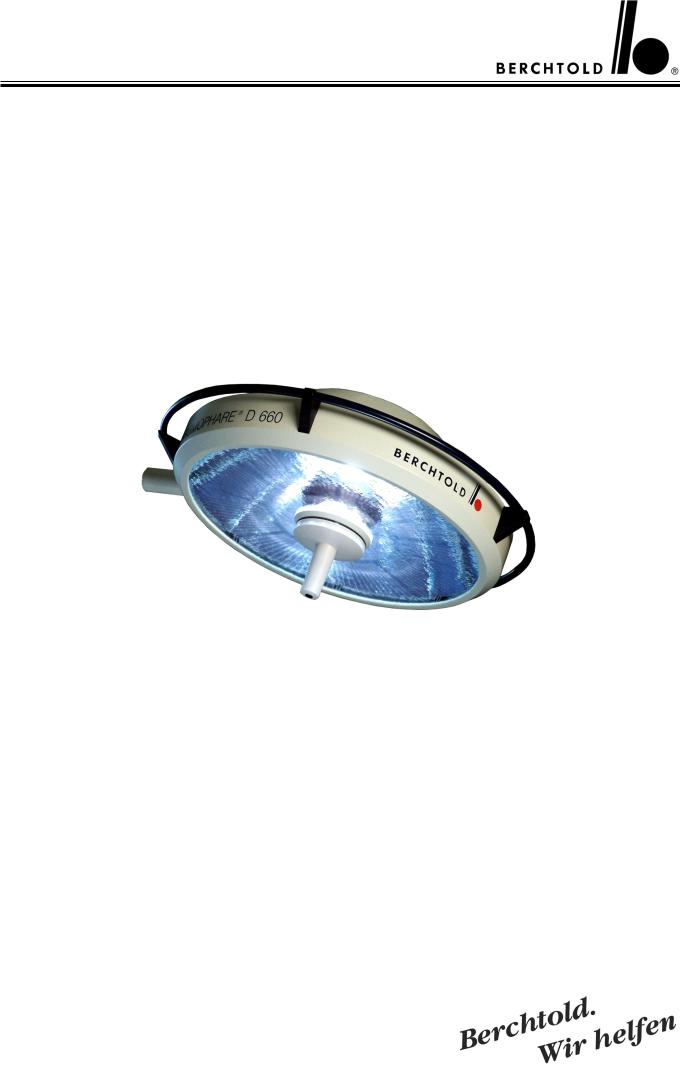
CHROMOPHARE®
D 660, D 540, D 510
Operating instructions
Single light and combination light
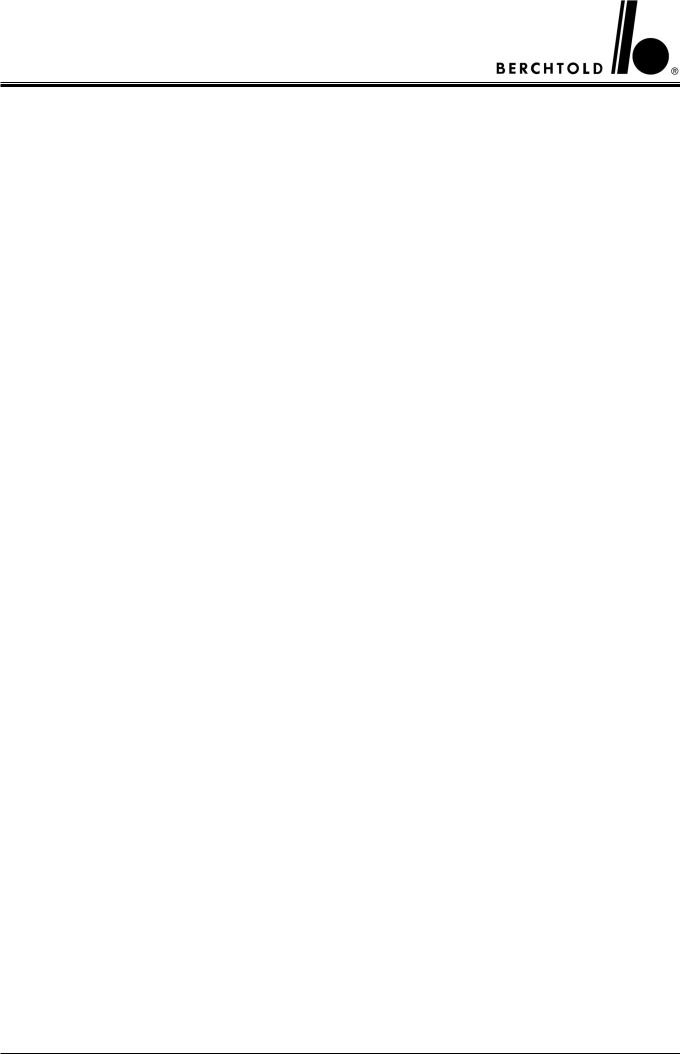
CONTENTS |
PAGE |
|||
1. |
General |
4 |
- 6 |
|
|
1.1 |
Introduction |
4 |
- 5 |
|
1.2 |
Manufacturer’s notes |
5 |
|
|
1.3 |
General information |
5 |
|
|
1.4 |
Information about product liability |
6 |
|
|
1.5 |
Incoming inspection |
6 |
|
|
1.5.1 |
Permissible environment conditions |
6 |
|
|
1.6 |
EC certification |
6 |
|
2. |
Before Operating |
7 |
- 9 |
|
|
2.1 |
Range of application (purpose) |
7 |
|
|
2.2 |
Safety information |
7 |
|
|
2.3 |
Installation instructions |
8 |
|
|
2.4 |
Instructions for initial start-up |
8 |
|
|
2.5 |
Visual and performance check |
8 |
|
|
2.6 |
Cleaning, sterilization, disinfection |
9 |
|
3. |
Components |
10 |
- 11 |
|
|
3.1 |
CHROMOPHARE® D 660 / 660, / D 540 or / D 510 (flat cardanic) |
10 |
|
|
3.2 |
CHROMOPHARE® D 660 / 660, / D 540 or / D 510 (classic cardanic) |
10 |
|
|
3.3 |
CHROMOPHARE® D 540 and D 510 (flat cardanic) |
11 |
|
|
3.4 |
CHROMOPHARE® D 540 and D 510 (classic cardanic) |
11 |
|
4. |
Operation |
12 |
- 18 |
|
|
4.1 |
Control panel and symbols CHROMOPHARE® D 660 |
12 |
- 13 |
|
4.2 |
Control panel and symbols CHROMOPHARE® D 540 and D 510 |
13 |
- 14 |
|
4.3 |
Control panel and symbols CHROMOPHARE® D 510 |
14 |
|
|
|
(without option “light intensity control”) |
|
|
|
4.4 |
Notes on operation and positioning the lights |
15 |
- 17 |
|
4.4.1 |
Adjusting the field size |
17 |
|
|
4.4.2 |
Changing the sterilizable handle |
17 |
|
|
4.5 |
Accessoires for CHROMOPHARE® operating lights |
17 |
|
|
4.5.1 |
Sterilizable handle |
17 |
|
|
4.5.2 |
Illuminants |
17 |
|
|
4.6 |
System variants |
18 |
|
2 |
CHROMOPHARE® D 660, D 540, D 510 Operating instructions (E) |

CONTENTS |
PAGE |
|||
5. |
Options |
18 |
- 20 |
|
|
5.1 |
Options for CHROMOPHARE® D generation |
18 |
|
|
5.2 |
Light Pilot System LFN (only for CHROMOPHARE® D 660) |
19 |
|
|
5.2.1 |
Adjusting the field size for LFN model CHROMOPHARE® D 660 |
19 |
|
|
5.3 |
Changing the sterilizable handles - LFN model |
19 |
|
|
5.4 |
Accessoires for CHROMOPHARE® D 660 LFN model - Light Pilot |
19 |
|
|
5.5 |
EndoLite® |
19 |
|
|
5.6 |
Camera system |
20 |
|
6. |
Maintenance |
20 |
- 22 |
|
|
6.1 |
Identification of the serial number and symbols used on the type plate |
20 |
|
|
6.2 |
Notes on changing fuse |
20 |
|
|
6.3 |
Instructions for changing lamps |
21 |
- 22 |
7. |
Technical data |
23 |
- 28 |
|
|
7.1 |
CHROMOPHARE® D 660 |
23 |
- 24 |
|
7.2 |
CHROMOPHARE® D 540 |
25 |
- 26 |
|
7.3 |
CHROMOPHARE® D 510 |
27 |
- 28 |
8. |
Appendix A |
29 |
|
|
|
8.1 |
Information about the electromagnetic compatibility (EMC) |
29 |
|
CHROMOPHARE® D 660, D 540, D 510 Operating instructions (E) |
3 |
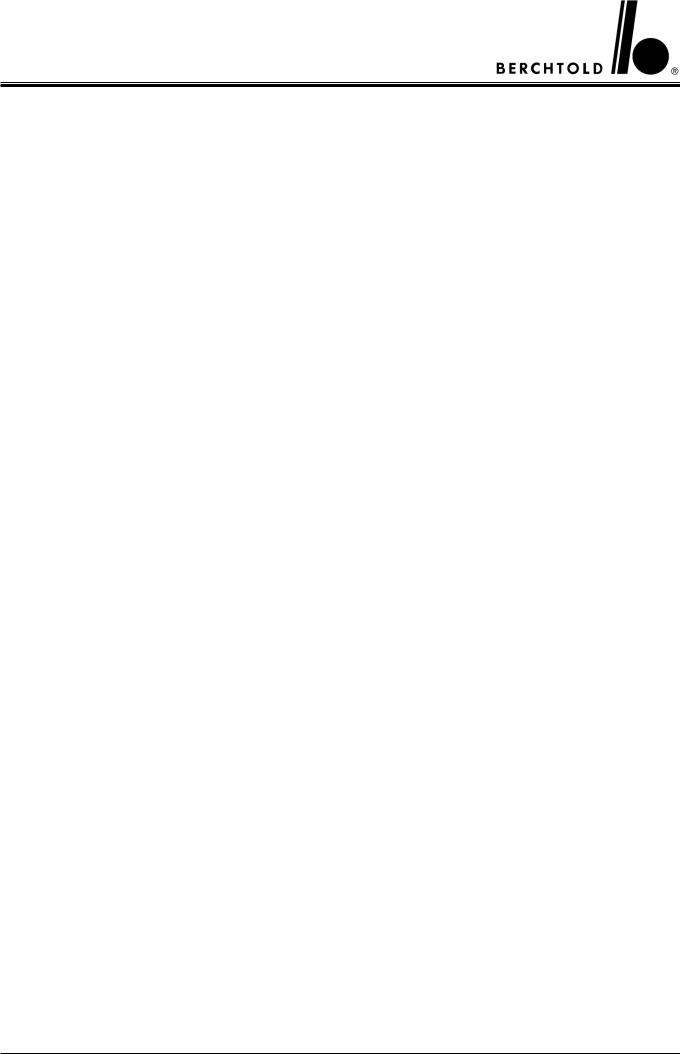
1.GENERAL
1.1 Introduction
The CHROMOPHARE® D 660, D 540 and D 510 consists of a swivel arm support, a lamp housing and a flange tube .The lamp housing is fixed to a cardanic-type support (vertical gimbal joint, horizontal gimbal joint) and can be rotated, swiveled and tilted in any direction. The height is adjusted via the 360° rotating vertical spring arm.
The spatial position of the lamp is adjusted by means of the 360° rotating horizontal swivel arm.
The special features of the CHROMOPHARE® D generation are:
•Dents and paint scratches or chips on the light hood are eliminated. An impact-absorbent light hood made of polymer material prevents deformations and paint defects.
•Cool light in the surgical area and in the beam path of the operating lights, which is achieved by filtering out the infrared proportion by means of the proven ThermoSorb® double filter system.
•The newly designed suspension and the hand grip with a particularly wide protective collar and an integrated release mechanism, ensure a high degree of hygiene.
•Excellent depth of illumination and low shadow levels, which are achieved by modifying the light beam using reflector elements.
•In the case of failure of the main lamp, 100 percent identical light ratios are guaranteed by the lamp-swivel mechanism, which swings the reserve lamp into the position of the main lamp (D 510 optional).
Additional special features of the CHROMOPHARE® D 660:
•High illuminance of 160,000 lx for illuminating a deep surgical area, which is achieved with the assistance of the newly developed energy reflection technology.
Additional special features of the CHROMOPHARE® D 540:
•High illuminance of 145,000 lx for illuminating a deep surgical area, which is achieved with the assistance of the newly developed energy reflection technology.
Additional special features of the CHROMOPHARE® D 510:
•Illuminance of 130,000 lux for illuminating a deep surgical area, which is achieved with the assistance of the newly developed energy reflection technology.
4 |
CHROMOPHARE® D 660, D 540, D 510 Operating instructions (E) |
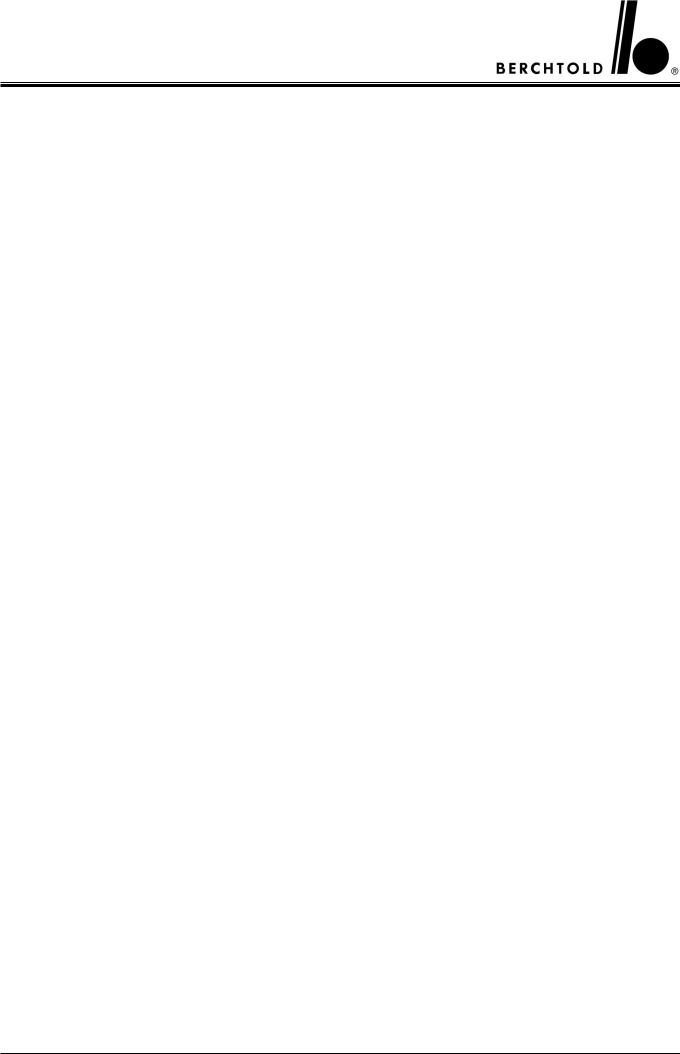
Additional optional characteristics of the CHROMOPHARE® D 510:
•Electronic light intensity control (65,000 Lux – 130,000 Lux)
•Light field size adjustment (170 mm - 280 mm)
•Reserve bulb with automatic switch over to reserve bulb operation and LED display
•Reserve lamp that swings into the optical centre for 100 % intensity in reserve operation
•Circumferential rail for simplifield handling
•Central integrated camera (optionally with fixed or adjustable zoom)
•Wall control
•EndoLite® for the illumination of the surroundings during endoscopic procedures
1.2 Manufacturer´s notes
The manufacturer of the products specified in these operating instructions is:
BERCHTOLD GmbH & Co. KG Ludwigstaler Straße 25
Postfach 4052
78505 Tuttlingen / Germany Internet: www.BERCHTOLD.de e-mail: Info@BERCHTOLD.de Tel. +49 (0) 74 61 / 181 - 0
Fax +49 (0) 74 61 / 181 - 200
1.3 General information
•This user’s manual is considered part of the equipment. It must be kept in the vicinity of the equipment at all times. Precise observance of the user’s manual is a prerequisite for the proper use and correct operation of the equipment, which is essential for the safety of patients and operators alike.
•Only accessories which are specified in this user’s manual, and which have been tested together with the equipment, may be used. If accessories are used which are not specified in the user’s manual, their ability to be used in accordance with safety regulations must be proved.
•All literature relates to the equipment model and the prevailing basic safety regulations when printed. All rights are reserved for equipment, switches, procedures, software programs and names.
CHROMOPHARE® D 660, D 540, D 510 Operating instructions (E) |
5 |
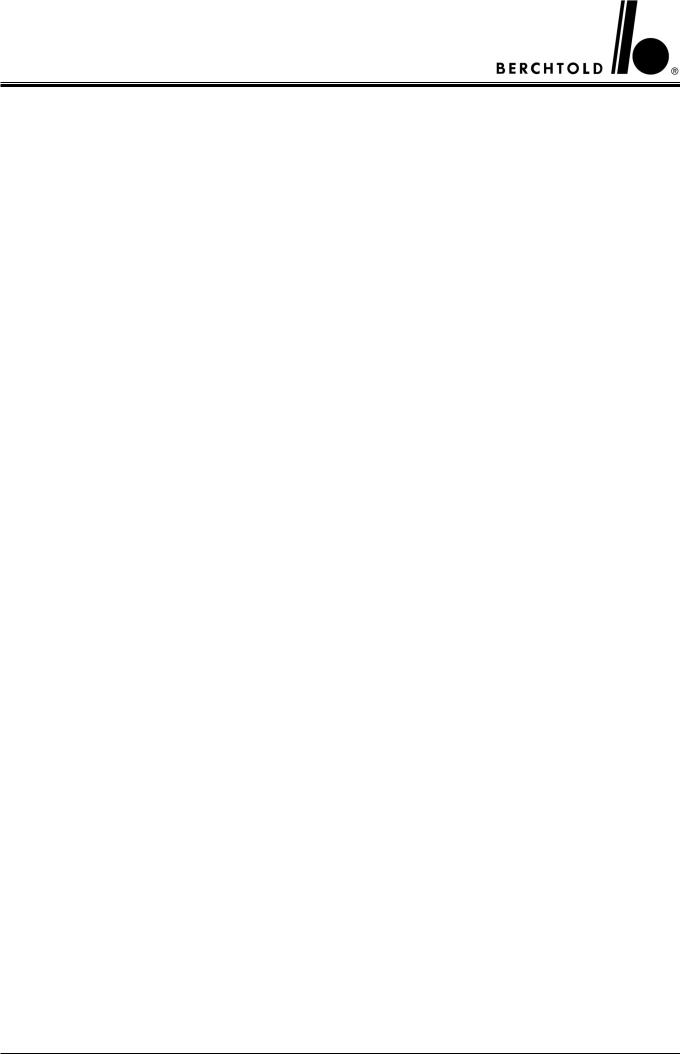
1.4 Information about product liability
BERCHTOLD considers itself responsible for the consequences of safety, reliability and performance of the equipment only if:
a)installation, modifications or repairs have been performed only by BERCHTOLD, or by an agent expressly authorized by BERCHTOLD to do so,
b)the electrical installation of the room complies with regulations IEC 60364-7-10, or the national electrical code, NFPA 70x (NEC)
c)the equipment is used in accordance with the user’s manual.
1.5 Incoming inspection
Please inspect the equipment and accessories immediately after receipt for any transportation damage and defects.
Claims for damage will only be valid if the vendor (BERCHTOLD) or the carrier are informed
at once. A damage report must then be prepared immediately. The damage record must be submitted to the nearest BERCHTOLD representative or to BERCHTOLD directly.
When an appliance or parts of an appliance are returned to BERCHTOLD or to a BERCHTOLD service agent, the original packaging should be used where possible. The following accompanying documentation must be attached: owner’s name and address, equipment number (see type plate), description of the defect.
1.5.1 Permissible environment conditions
For transport and storage (in original packing; for maximum 15 weeks)
Ambient temperature - between -10°C and +60°C, 14 ° F and 140 ° F
Relative air moisture |
- between |
10 % and 85 %, no condensation |
Air pressure |
- between |
500 hPa and 1060 hPa, 14.8 in Hg and 31.1 in Hg |
For operation |
|
|
Ambient temperature - between +10°C and +40°C, 50 ° F and 104 ° F |
||
Relative air moisture |
- between |
30 % and 75 % |
Air pressure |
- between |
700 hPa and 1060 hPa, 20.7 in Hg and 31.3 in Hg |
1.6 EC certification
The equipment complies with the requirements of the EC guideline regarding medical products, 93/42/EEC as well as the UL guidlines. The certification with the EC marking is located on the type plate.
6 |
CHROMOPHARE® D 660, D 540, D 510 Operating instructions (E) |
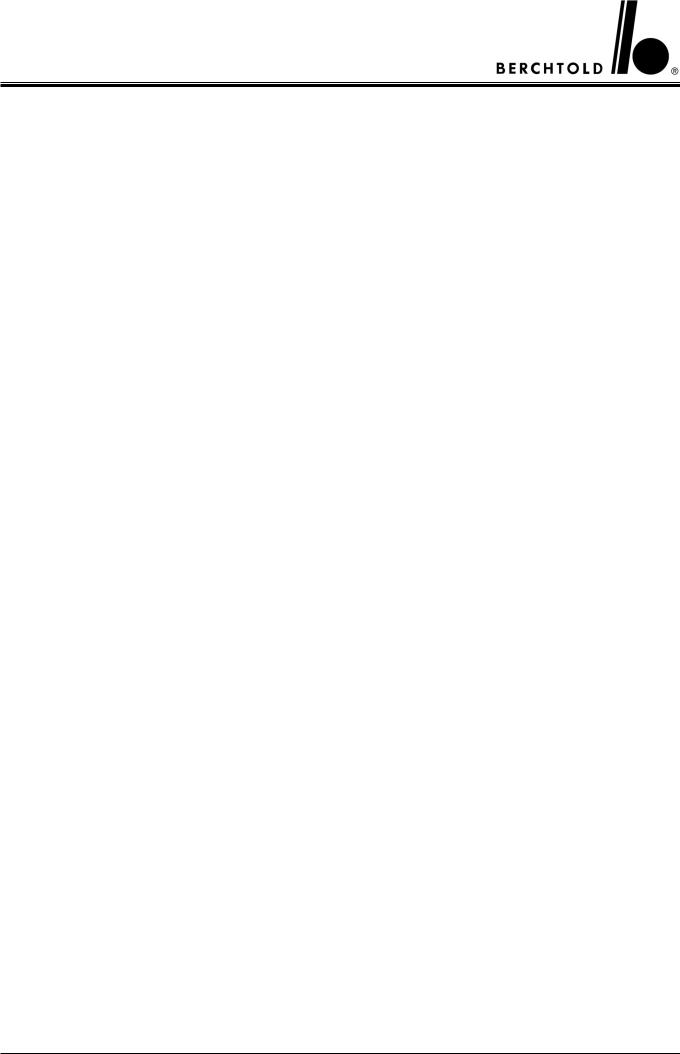
2.BEFORE OPERATING
2.1 Range of application (purpose)
The CHROMOPHARE® light is a medical light for use in hospital treatment rooms. It is used for the local illumination of the patient’s body. It may only be used in rooms which have been correctly designed out in accordance with IEC 60364-7-10, or NEC.
The CHROMOPHARE® light as a single light provides a very high degree of failure protection, as it is (optionally) equipped with automatic switch-over to a reserve lamp, electronic monitoring with a “bypass switch” and an automatic APU switch-over. However, not all components are duplicated, so that in some circumstances a failure is still possible. As a matter of principle, single lights should not be used for operations where a light failure could represent a great danger to the patient.
Light combinations with two or even three light heads provide more security against light failure and a better brightness of the operating field. They provide light from different angles and maximum protection against light failure due to the fact that components are redundant. This applies particularly when they are connected to an emergency power supply (APU) in addition to the mains supply. These combination lights may be used in all medical disciplines for the illumination of surgical areas.
2.2 Safety information
•Incorrect operation and non-observance of safety measures can cause serious consequences. Therefore make sure that you have read and understood the information in your CHROMOPHARE® user’s manual.
•The light is not intended for operation in areas where there is danger of explosion.
•Do not look into the illuminated light and do not put any reflective objects into the path of the beam. Because of the high illumination strength there is a danger of glare.
•The distance between the light emission surface area of the operating light and the patient surface should not be less than 60 cm in order to ensure proper illumination.
•The light must not be operated if the cover glass or the filter system is damaged or destroyed. Thermal radiation can reach the surgical area, heating up and drying out the tissue of the operation wound. If the effect is prolonged, there is even the danger of tissue necrosis.
•Do not place any objects on the lamp housing or hang objects on arms or lamp housings, as this may compromise the stability of the support and there is the danger that these objects may fall into the surgical area. Attaching or hanging heavy objects can destroy the mechanism.
•The lamp housing must not be covered while in operation, as this prevents heat exchange with the environment and could cause the surgical light to overheat.
•Collision of the supporting arms and lamp housings should to be avoided. A severe collision could result in lights being damaged or parts falling into the surgical area.
•The overlay of the light fields can cause an increase in heat generation.
CHROMOPHARE® D 660, D 540, D 510 Operating instructions (E) |
7 |
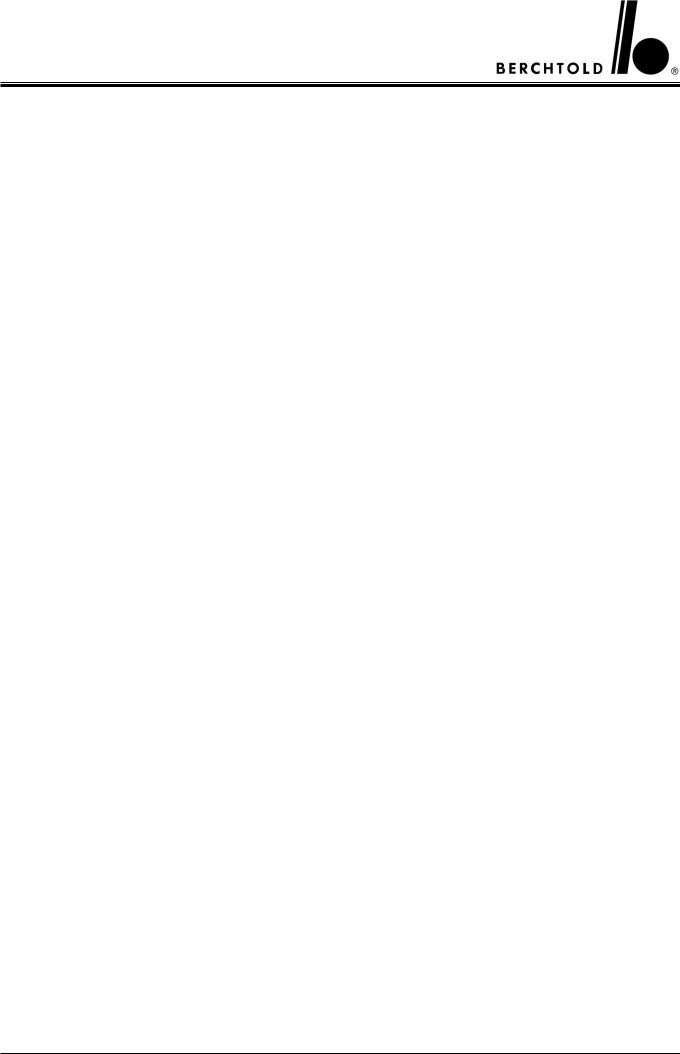
2.3 Installation instructions
Due to their high rotational moments and self-weights, the installation and mounting of all CHROMOPHARE® lights on the ceiling of the operating room must be performed by BERCHTOLD personnel or by a contractor authorized by BERCHTOLD, in accordance to BERCHTOLD “Mounting instructions for ceiling lights”.
The electrical installation must comply with the customer’s code requirements.
Incorrect assembly of the lights can result in damage to the mounting system and potential risk to the patient and staff. The on-site electric installation must be performed in accordance with IEC 60364-7-10 or NEC and include a fuse protection as well as a mains switch for a simultaneous, dual pole separation of the light. For further information, please note the mounting instructions.
2.4 Instructions for initial start-up
The operator may begin to use the light, after the manufacturer or supplier
a)has carried out a performance check at the place of operation,
b)has introduced those responsible for the operation of the light to its correct handling by means of the user’s manual.
2.5 Visual and performance check
Before initial start-up the manufacturer or supplier should check that the CHROMOPHARE® light has been properly installed and is in a safe and operational condition.
A visual inspection of the following points must take place:
•After switching-on the unit, light must be emitted from the main lamp, and in the case of combination lights, also from the additional lamp.
•Inspection of the light emission lens of the lamp housing
If the light emission lens is damaged or broken, glass splinters can fall out. The light must be switched off immediately and must not be used until the defect has been rectified.
•Inspection of the reserve lamp warning indicator
In the case of failure of the main lamp, the reserve lamp is automatically switched on and swung into the position of the main lamp (D 510 optional). The yellow warning indicator on the lamp housing illuminates to indicate this error. The defective main lamp must be replaced immediately.
•Checking the operational state of the control unit (D 510 only with option “light intensity control”)
The individual functions must be checked by activating the appropriate keys. Faults in the main circuit of the control electronics are indicated by the red fault indicator on the control unit. In this case the light operates at its maximum luminous intensity and can no longer be controlled via the keys.
•Checking the mechanical movement mechanism of the system
The mechanical operation of the light system is checked by swiveling and rotating the movement mechanism.
8 |
CHROMOPHARE® D 660, D 540, D 510 Operating instructions (E) |
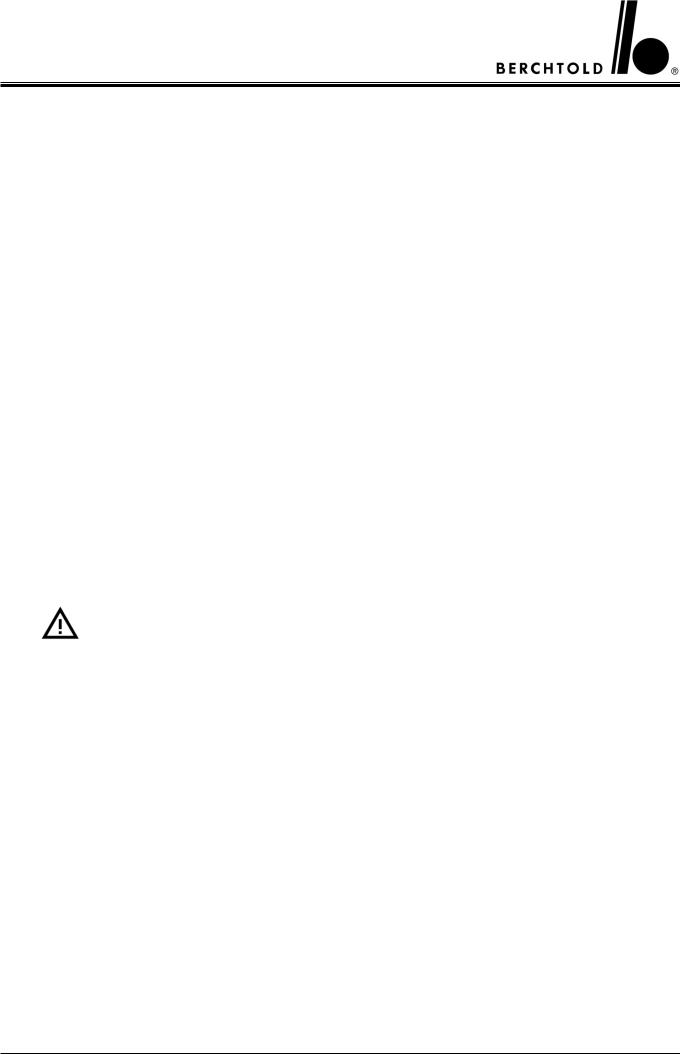
2.6 Cleaning, sterilization, disinfection
•All parts of the CHROMOPHARE® light can be cleaned with standard commercial cleaners on all exterior surfaces including the control unit, and disinfected with the disinfectants normally used in surgical areas.
•Only disinfectants may be used, that are certified from the manufacturer for the following materials: Polycarbonate (PC), Polyamid (PA), Polyvinylclorid (PVC), Acrylnitril-Butadiene-Styrol-Copolymer (ABS), Polyetherimide (PEI) and Silicones.
•Cleaning, disinfectant and sterilization of the sterilizable handles
The sterilizable handles are made of heat-resistant, impact-resistant plastic (PEI). They
can be cleaned with mild alkaline cleaners without active chlorine. The cleaners must be thoroughly rinsed off with water. Alternatively, the hand-grip holders can be cleaned mechanically with heat-disinfection up to a maximum temperature of 93°C/10 min.
For disinfecting the handle sleeves we recommend products with an alcohol or aldehyde base. The sleeves must be rinsed before sterilization.
The handles can be sterilized in steam. The recommended parameters are:
1.Steam sterilization at 121° C; 1.3 bar (18.9 PSI); 25 to 30 minutes
2.Steam sterilization at 134° C; 2.3 bar; (33.3 PSI); 4 minutes
When filling the autoclave ensure that the open side of the handles are face down. The sleeves must lie free and must not come into contact with any other items being sterilized.
Hot-air sterilization is not recommended by BERCHTOLD. However, if it is necessary, the handles should be sterilized at 134° C; 3 minutes.
Note:
Sterilizable handles are subject to natural wear.
As a rule, a life of approx. 100 cleaning cycles is normal. Damaged grip sleeves must not continue to be used.
The operator should refer to recongnized standards for hygiene and disinfection
CHROMOPHARE® D 660, D 540, D 510 Operating instructions (E) |
9 |
